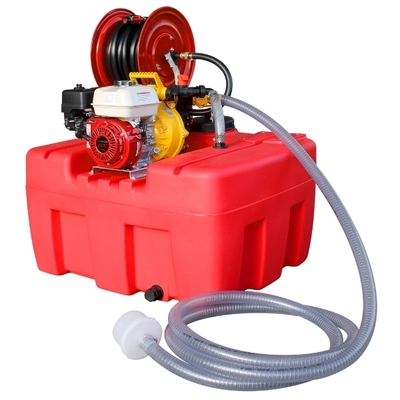If you work on or own a farm, you’ll know about the heightened fire risk brought about by dry seasons. From shrivelled shrubs catching alight to large-scale machinery and wiring that has not undergone a safety check, the dangers are great, and the consequences can reach further than a domestic fire can spread. Fire safety awareness and preparation should be part and parcel with farmyard maintenance, from tending to farm machinery, buildings and wirings to having fire fighting equipment prepped and ready to go. If you’re wondering which fire fighting equipment you need to ensure adequate fire safety, you’ve come to the right blog.
Fire Extinguisher
To err on the side of caution, you should place portable fire extinguishers in key locations around your farm, such as barns or workshops. Did you know there are different types of fire extinguishers suited for different types of fires? In the case of a farm, you should invest in extinguishers of the A, B or E classes, which suit standard combustables (e.g. wood), flammable liquids and electrical equipment respectively. Of course, requirements will vary from farm to farm, so you should further investigate the different classes of fire extinguisher and assign a suitable one to each location where applicable.
Fire Fighting Pump
Where there’s smoke, there’s fire — and the best way to fight the flames is with water, and lots of it. Portable and built to pump high volumes of water, fire fighting pumps are your trusty solution for when power is scarce or time is of the essence. Attach the appropriate hose extension and use the pump to suction from a nearby water source. From there, pick up the pump’s carry frame and bring it where it needs to be. You never know — its mobility may spell the difference between partial and complete destruction.
Bunyip Equipment stocks a Silvan model called the Selecta Power Fire Fighting Pump. With a capacity of seven bars of pressure and three-and-a-half metres of suction lift, you can count on this pump to provide the water you need in a fire emergency.
Suction Hose
Of course, a fire fighting pump can’t draw from its water source without a suction hose. To set this up, lay the hose along the suction side of the pump (aka the inlet), allowing the water to travel through. The water may have a greater or lower pressure than the atmosphere itself.
Built to resist pressure both internal and external, a suction hose forms a vacuum inside itself to bolster itself against external air pressure — including the pressure from a fire hydrant — and ideally withstand it. At Bunyip Equipment, we stock a dual-purpose water transfer hose attachment that can function as a suction or delivery hose. Pair it with the Selecta Power Fire Fighting Pump and you’re ready for action.
Delivery Hose
When it comes to delivering water onto a large fire, everybody knows you need a hose. A delivery hose lies along the delivery side of a pump (aka the outlet), becoming a vessel for water to coarse through it at a pressure surpassing that of the atmosphere. At Bunyip Equipment, we have delivery hoses with interior diameters of either eight, ten or twelve-and-a-half millimetres. While our eight-millilitre variants have a maximum working pressure of 690 kilopascals, our slightly thicker hoses can handle up to 2067 kilopascals. Sold in 20-metre lengths, these hoses are either the perfect replacement for a broken hose or fantastic extensions for an existing spray unit.
Fire Fighting Unit
Fire fighting units, also referred to as fire fighters, are everything you need rolled into one. Depending on the model you go with, features will vary, but it will likely at least feature a pump, hose and water tank. Bunyip Equipment hosts a handful of fire fighting units from Silvan, available with water-holding capacities of 400, 800 and 1,100 litres. Whether you want one for water transfer or washing down your farm machinery, these fire fighting units will slot into place in the back of a one-tonne tray or between the wheel arches of the best utilities. If you want to refill your water tank faster, Silvan’s SQUATPAK is what you need, though this is at the cost of having anything more than 400 litres of water space. Review the features of each model and see which one would fit your farm.
Overall, a fire fighting unit is a comprehensive solution that encompasses various tools and devices necessary for effective fire combat. For a deeper understanding of the significance of having the right fire fighting equipment on your farm, check out our article on the importance of fire fighting equipment in agriculture. Fire fighting units can vary in size and configuration based on the intended use, such as residential fire fighting units, wildland firefighting units, or industrial firefighting units.

 CART
CART

 &
& 
 Contact Us
Contact Us





























 VIEW ALL BRANDS
VIEW ALL BRANDS
























